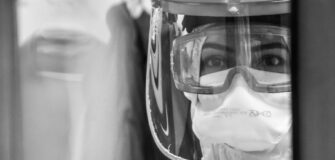5 Needle Holder Types Every Surgeon Needs in an Operation Theatre
Share
Invasive surgery is complicated for all parties involved. The procedure itself lasts a few hours (more or less) but the aftercare is where it gets tricky. Needle holders play a significant role in surgery and aftercare. The quality of the suture depends on the placement of the incision, the technique a surgeon uses, and the precision of the needle holder.
Application in surgery
The instrument in question is useful during invasive and superficial procedures. This apparatus is used to maneuver the sterile suture thread along the incision. Also known as needle drivers, their primary function is to drive the needle through the tissue and skin. The goal is tissue approximation; however, each procedure is categorized by certain factors that dictate what type of driver is useful in suturing up the wound.
The jaws of the apparatus are serrated to hold the suture thread firmly even in constricted locations. The size of the driver apparatus must be on par with the needle a surgeon selects to perform the procedure.
Choosing the correct variation for a needle holder
The right needle holder variation is critical to work with calcified tissue and certain organs in the human body. In most cases, the surgeon must minimize movements so as to not cause tissue burns. Surgical needles are minuscule (for some procedures) to manipulate these the right apparatus is crucial.
A surgeon chooses the correct configuration based on the type of procedure they are rendering and the health of the patient. For instance, during heart procedures on the elderly, a surgeon will use a needle thinner than an eyelash. While this means targeted treatment and improved healing outcomes, it can also result in needle breakage during surgery. Therefore, the grip on the tool must be firm. The quality of the holder and how precise the jaw is as well as the proportion of the apparatus.
Needle Holders a Surgeon Needs
- Mayo Hegar – This is a multipurpose driver useful in both animal and human procedures. This is also an instrument capable of holding several needle sizes. The jaws are strong, firm, and serrated precisely to hold heavier apparatus. The unique clamp mechanism comes in handy when a surgeon is closing a wound in a location with thicker tissue placements. This variation is further available in several sizes for improved precision during surgery and is powerful enough to cut the suture if necessary.
- Castroviejo – The sleek jaw distinguishes this tool from the rest. Surgeons prefer the Castroviejo variation in microsurgeries because of its fine tip and handle mechanism. This tool does not require excessive effort to open, close or manoeuvre as the operator positions, inserts, and extracts the needle with it. The spring-like feel of the handle is easy to manipulate especially when the procedure is time-sensitive or during critical treatments. The tungsten carbide inserts improve its shelf life and application in the operating room. This tool is available in several variations.
- Crile Wood – This medical tool is useful for holding smaller needles. The short, sleek jaw is serrated with tungsten carbide inserts for an exceptional grip when a suture is administered. The straight unique pattern is ideal for firm gripping and the serrated blades make this tool a diverse apparatus. It is reusable, easy to maintain, and a necessity in most operating rooms.
- Webster – The powerful jaw defines the function of this tool. This is preferred by surgeons if they need to apply significant force to pass a needle through flesh and tissue. Or if they need to make long and deep passes through the subcutaneous tissue. This is ideal for gripping larger needles that are otherwise difficult to hold with other drivers or at risk of slipping up. The high tensile strength of this instrument sets it apart from the rest of its counterparts. It is also available in several variations for a variety of treatments.
- Olsen Hegar – This is a versatile instrument. Besides providing a firm grip on the suture apparatus, it is also useful in cutting threads and bandage materials. Changing instruments is not necessary with this tool. That said, this apparatus isn’t suitable for all needle sizes and configurations. A surgeon can use a range of variations for the ideal outcome in surgery.
How to find premium quality for a surgical needle holder?
These surgical tools are necessary for most procedures. As such compromise on quality affects the success of the surgery. To find the right supplier consider this:
- How long has the manufacturer been making the instruments you need?
- Consider their reviews and ratings in the industry
- The material they use, the warranty, and durability of the instruments
- Are they direct suppliers?
- Do they have customization options?
The supplier must meet the relevant criteria to quality as a dependable resource for common needle driver types.
Note: Content has been edited for style and length.
Emily Sofia is a business communications coach who teaches writing, speaking, and leadership skills to adults in the midst of a career change. She cover topics such as Medical Sciences, effective workplace communications, and public speaking skills.




